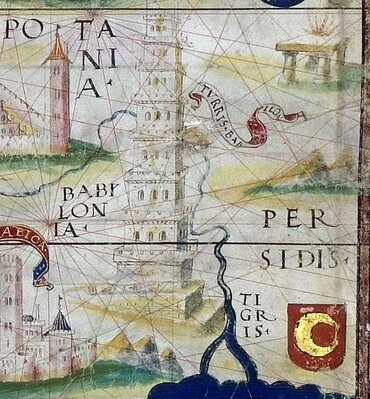4447. 'Hamor spoke to them, saying' means the good of the Church among the Ancients. This is clear from the representation of 'Hamor' as that which was received from the Ancients, dealt with in 4431, namely the good of the Church received from them, for the good of the Church is 'a father', and the truth derived from that good, meant here by 'Shechem', is 'a son' - which also is why 'father' in the Word means good, and 'son' truth. The expression 'the good of the Church among the Ancients' is used here, not the good of the Ancient Church, for the reason that the phrase 'the Church among the Ancients' is used to mean the Church that descended from the Most Ancient Church which existed before the Flood, whereas the Ancient Church is used to mean the Church which came into existence after the Flood. Those two Churches have been dealt with several times previous to this, when it has been shown that the Most Ancient Church which existed before the Flood was celestial whereas the Ancient Church which came into existence after the Flood was spiritual. The difference between the two has also been dealt with often.
[2] Remnants of the Most Ancient Church which was celestial were still in existence in the land of Canaan, especially among those in that land who were called Hittites and Hivites. The reason why such remnants did not exist anywhere else was that the Most Ancient Church, which was called Man or Adam, 478, 479, existed in the land of Canaan, where the garden of Eden, which meant the intelligence and wisdom of the members of that Church, 100, 1588, and the trees in it their perception, 103, 2163, 2722, 2972, was therefore situated. And because intelligence and wisdom were meant by that garden or paradise the Church itself is also meant by it. And because the Church is meant, so also is heaven; and because heaven is meant, so also in the highest sense is the Lord. So it is that in the highest sense the land of Canaan also means the Lord, in the relative sense heaven and also the Church, and in the personal sense the member of the Church, 1413, 1437, 1607, 3038, 3481, 3705. So it is too that the word 'land' standing by itself in the Word has a similar meaning, 566, 662, 1066, 1067, 1413, 1607, 3355; while a new heaven and a new earth mean a new Church, internally and externally, 1733, 1850, 2117, 2118 (end), 3355 (end). The Most Ancient Church was situated in the land of Canaan, see 567, and it was from this that places there became representative. It explains why Abram was commanded to go there, and also why the land was given to his descendants from Jacob, namely that the representatives connected with the places which were to be used in the composition of the Word might be perpetuated, 3686. This was why every place in that land, including mountains and rivers, and also all the borders surrounding it, became representative, 1585, 1866, 4240.
[3] From all these considerations one may see what the expression 'Church among the Ancients' is used to mean, namely remnants of the Most Ancient Church. And because those remnants existed among the Hittites and Hivites, Abraham, Isaac, and Jacob, with their wives, acquired a burial-place among the Hittites in their land, Genesis 23:1-end; Genesis 49:29-32; 50:13; and Joseph among the Hivites, Joshua 24:32. Hamor, Shechem's father, represented the remnants of that Church, and as a consequence means the good of the Church among the Ancients and therefore the origin of interior truth from a Divine stock, 4399. What the difference is between the Most Ancient Church which existed before the Flood and the Ancient Church which came into existence after the Flood, see 597, 607, 608, 640, 641, 765, 784, 895, 920, 1114-1128, 1238, 1327, 2896, 2897.







